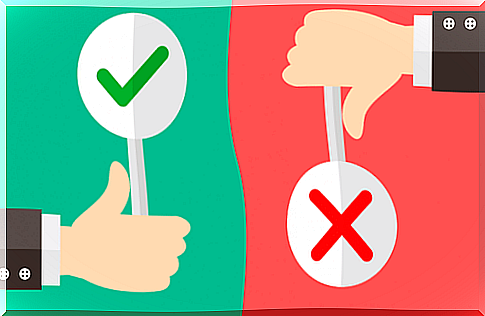Aversion Condition And Positive Condition

Experts introduced the concepts of aversion conditioning and positive conditioning into the third generation of therapies. Sometimes they are also known as contextual therapies. They are very interesting concepts because they are directly related to our behavior.
Aversion condition and positive condition are mainly related to motivation. They also have to do with how power is exercised, both on a general level, as the state, and on a more personal level.
These two ways of exercising control have very important effects on your state of mind and attitude towards life. They are present all the time. Therefore, they influence your and other people’s behavior without you even noticing it. Let’s take a closer look at what this is all about.

Aversion condition
Aversion condition includes all the factors that determine your aversive behavior. These factors cause you to avoid certain situations in the environment. Therefore, the person behaves in ways that allow them to avoid something they consider unpleasant or painful.
Here are some examples:
- A person desperately runs away because they think they are being chased by someone who will hurt them. In this case, the pursuer pursues the behavior of the person they are hunting. The latter wants to avoid his attacker.
- A girl falls into a pool and swallows a mouthful of water. Later, she is very careful every time she is near water. In fact, she will never go to a pool again. What happened to her conditioned her aversion to water.
- A student does not do his homework because he was with his friends. Thus, they tell their teacher that they were sick and therefore could not finish their homework. They lie to avoid the consequences of their irresponsibility.
- A man avoids talking honestly with his boss. When he was little, his parents raised him in a very restrictive environment. They forbade him from expressing his opinions. Every time he has to talk to an authority figure, he gets very scared. That’s why he avoids it even though he really needs to do it.
Positive condition
Positive conditioning is a form of conditioning in which will and desire are in control. In other words, it corresponds to situations where the desire to get something you consider positive motivates your behavior.
Here are some examples:
- A person jogs every day because they follow an exercise plan. Furthermore, they have set a goal of reaching a certain speed or level of endurance. Thus , the motivation comes from their willingness to improve their performance.
- A girl goes out in a pool and has fun and plays in the water. Every time she sees a pool, she tries to jump into the water. For her, swimming is actually synonymous with playing. She does this because she likes it.
- A student who did not do his homework confesses to his teacher and apologizes. Even if the teacher gives them a bad grade, they trust the student even more now. In this case, therefore, the relationship is more important than the fear of punishment.
- A man talks to his boss and other authority figures when he needs something or when he wants to say something that he considers relevant to his job. He does it honestly and respectfully, but without fear.
The common denominator in all these cases is the factor of desire. In all cases, the person behaves in a certain way because they want to do it and consider it beneficial. They have control over their actions and in every situation the actions strengthen their well-being.

Aversion condition and positive condition
We can extend the concepts of aversion and positive conditioning to greater social levels. For example, state laws are full of sanctions for those who do not comply with the legal framework it sets.
Many people behave to try to avoid punishment and sanctions. Society rarely rewards good deeds. Instead, it punishes those they consider bad. Thus, aversion conditioning and positive conditioning rarely work together in the real world. It is mostly aversion conditions that dominate.

At the macro and micro level, aversion conditioning generates fear, sadness and submissiveness. On the other hand, positive conditioning gives rise to happy, free and courageous societies and people. Aversion condition and positive condition are not mutually exclusive. They actually coexist in humans in many cases.
Which of these types of conditions exist in your life and where do they affect you?









